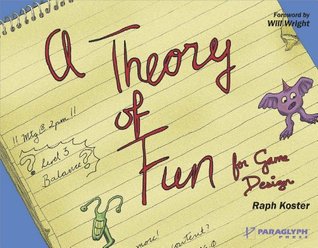More on this book
Community
Kindle Notes & Highlights
Games might seem abstracted from reality because they are iconic depictions of patterns in the world. They have more in common with how our brain visualizes things than they do with how reality is actually formed. Since our perception of reality is basically abstractions anyway, I call it a wash.
Game designer Marc LeBlanc has defined eight types of fun: sense-pleasure, make-believe, drama, obstacle, social framework, discovery, self-discovery and expression, and surrender. Paul Ekman, a researcher on emotions and facial expressions, has identified literally dozens of different emotions—it’s interesting to see how many of them only exist in one language but not in others. Nicole Lazzaro did some studies watching people play games, and she arrived at four clusters of emotion represented by the facial expressions of the players: hard fun, easy fun, altered states, and the people factor.
NP-hard and NP-complete: These are terms from complexity theory, the field of mathematics that studies how hard it is to solve a given problem (as opposed to whether it can be solved at all, which is called “computability theory”). Other types of complexity include P, NP, PSPACE-complete, and EXPTIME-complete. Many abstract board games are classifiable as terms of their mathematical complexity in this way; for example, checkers is EXPTIME-complete, and Othello is PSPACE-complete. Rendering games obsolete is a favorite pastime of mathematicians. They have proven that for optimal players, the
...more
Jumping times: An article by Ben Cousins in Develop Magazine (August 2002) examined this. The author found that hit games with well-received gameplay had level lengths clustering around 1 minute and 10 seconds, characters that jump have elapsed time in the air clustering around 0.7 seconds, and the elapsed time to perform three combat moves in succession clustered around 2 seconds. He suggests that these should be considered constants for good gameplay.


